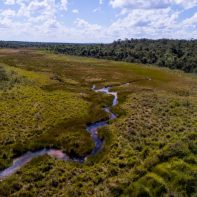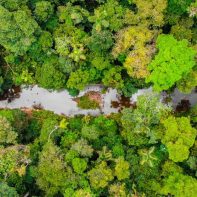The life-support system of our planet
03/20/2020
Today, on International Day of Forests, join us in celebrating our planet’s most critical ecosystems.
Forests are the life-support system of our planet. They provide habitat to millions of animal and plant species, and sustain the cultures and livelihoods of hundreds of indigenous communities. They produce the vast majority of the oxygen we need to survive, and secure fresh water. They are essential to combating climate change.
Yet, deforestation continues at an alarming rate. Every year, an estimated 15 billion trees are chopped down across the planet to make room for agricultural and urban lands and other uses. Over 50 acres have disappeared since you started reading this post.

Forests also add immeasurable beauty to our lives.
Saving forests helps regulate our climate, filter pollutants, and protect our most endangered wildlife, among so many other benefits. Tropical tree cover alone can provide 23 percent of the climate mitigation needed over the next decade to meet goals set in the Paris Agreement in 2015, according to one estimate.
For these reasons, and many more, Nature and Culture creates protected areas in habitats that are home to some of the greatest number of species and most carbon-rich forests on the planet. Thanks to our supporters, we’ve protected more than 20 million acres of forests and threatened ecosystems, including, most recently:
Cloud forest in the Peruvian Andes
Bosques Montanos y Páramos Huaricancha is home to an impressive array of wildlife, including the mountain tapir and grey-breasted mountain toucan. Alongside endangered mammals and Andean birds stands the quina, known worldwide for its medicinal uses.
Three million acres in Bolivia’s dry forest
Located in Bolivia’s Chaco, Ñembi Guasu holds huge reserves of water, energy and cultivable land, and a great diversity of indigenous peoples, including the Ayoreo, the only native population that remains in voluntary isolation outside the Amazon.
Forest linking the Andes Mountains with the Amazon
Huamboya Municipal Conservation Area safeguards priority forest ecosystems and cultural diversity in central Ecuador, adding to a network of protected areas in the region spanning 7.5 million acres.
Nature and Culture is incredibly grateful for the work that has been accomplished thanks to the generosity of our supporters. But there is still more to be done. You can protect our planet’s most critical ecosystems, acre by acre.
Learn more about the forest ecosystems Nature and Culture works in here.




